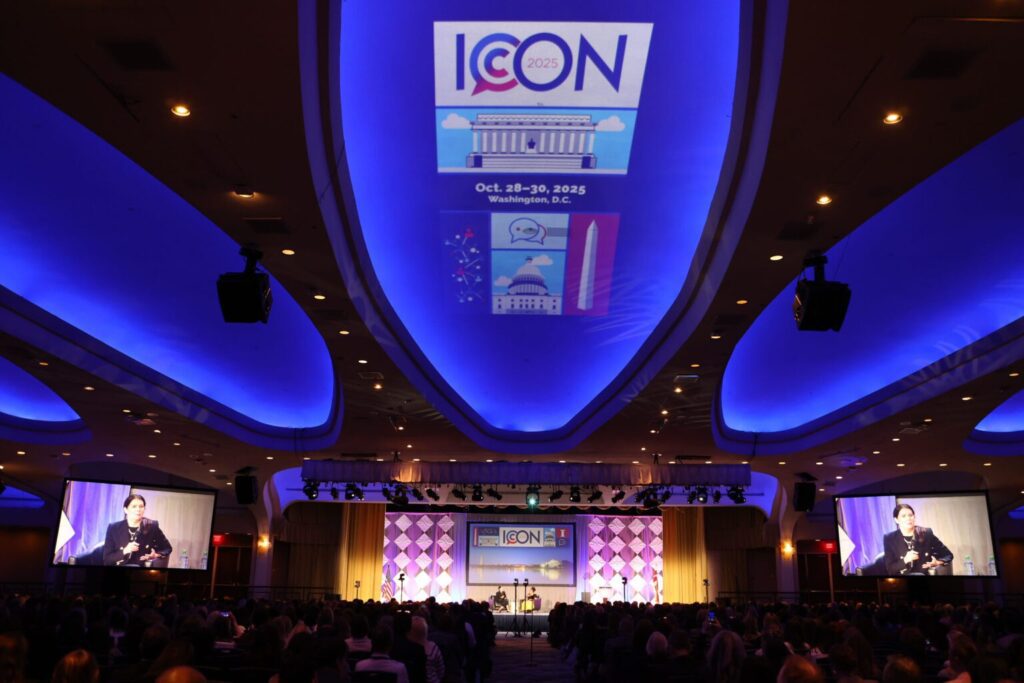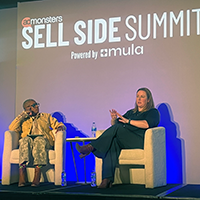Over the past year, media agencies have been frantically scrambling to save marketing as they know it. Many fear the demise of the 30-second television ad spot, now threatened by digital video recorders like TiVo that let viewers “skip” commercials. Media’s answer: a slightly updated return to the product placement techniques developed during television’s Golden Age of the 1950s, whereby they inject products into the content audiences actually view.
Meanwhile, promotion-minded brand marketers are taking their typically measured approach to all the accelerated hoopla surrounding TV-based and other entertainment marketing. They’re buying in, but very selectively.
Research conducted for PROMO in recent months shows that brand management is moving cautiously when weighing their opportunities to allocate marketing dollars for tie-ins that may be high on glamour but low on measurability. In fact, the majority of respondents report that their annual entertainment marketing budgets per brand tap out at just under $250,000 (see Chart 1).
The median budget for respondents was just $166,666 (the mean budget for the same group was $908,375). And these were just not small companies: 26.1% of those surveyed represented brands worth $100 million or more; 13% were with brands in the $10 million to $50 million annual revenue range; less than a third (30.4%) answered on behalf of brands generating less than $10 million per year in sales.
This level of entertainment spending won’t take most companies very far in Hollywood, however. Consider, for example, that the fee a brand must pay for loyalty rights for a single major film can run up to and beyond $350,000. The family-oriented, star-driven properties that most brands find most attractive as marketing partners for sponsorship, licensing or other tactics are also the most expensive, according to Mitch Litvak, CEO of the L.A. Office, an entertainment marketing agency based in Los Angeles.
| 2004 entertainment marketing promo budget | % of respondents |
|---|---|
| less than $10K | 15.2% |
| $10K to $24K | 10.9% |
| $25K to $49K | 6.5% |
| $50K to $99K | 4.3% |
| $100K to 249K | 19.6% |
| $250K to $499K | 6.5% |
| $500K to $999K | 6.5% |
| $1M to $2.49M | 4.3% |
| $2.5M to $4.9M | 4.3% |
| $5M and more | 8.7% |
| Unsure | 13.0% |
| Source: PROMO Entertainment Marketing Research, March 2004 | |
| Marketers find entertainment properties for marketing tie-ins through: | % of respondents |
|---|---|
| Promotion agencies | 39.1% |
| Studios | 34.8% |
| Entertainment reps | 30.4% |
| Entertainment marketing agencies | 23.9% |
| Media coverage of pop culture | 47.8% |
| Other | 10.9% |
| Source: PROMO Entertainment Marketing Research, March 2004 | |
| Note: Multiple answers permitted | |
Finding the right partner, with the right deal, at the right price can be a challenge even for marketers who are accustomed to crafting ties to theatrical or DVD releases, broadcast and cable TV deals, or even relatively modestly priced music or sports entertainment sponsorships. Pitfalls are many: films can tank at the box office (the marketing was actually better than the film when Dr. Seuss’ The Cat In the Hat was released theatrically last year); even when successful, the majority of major films released in recent years have tended to draw teens or children, demographics with the least disposable income. Meanwhile, over on the television front, broadcast and cable audiences may stay away in droves (how many TV shows make it into a second season?), or splintering among a multitude of channels, tuning out in favor of electronic gaming, or devoting only partial attention to the content on the screen. (According to a study done by BIGResearch last October, 74.2% of TV viewers regularly or occasionally watch and read the newspaper at the same time; 66.2% of the TV viewers surveyed say they regularly or occasionally watch TV while going online.)
How’s a brand supposed to spend its money wisely in the multi-ring entertainment circus?
Surprisingly, few marketers (23.9%) in the PROMO study said they turn to entertainment specialists when weighing these options (see Chart 2). Most (47.8%) rely instead on their general knowledge of what’s hot in pop culture and what’s getting the biggest play in the media. Another 39.1% say they also demand insight from the promotion agencies they work with on a regular basis to decide how they should incorporate entertainment into their strategic and tactical brand campaigns.
Sponsorship weighs in
When they do play in the entertainment arena, promotion marketers tend to go with what they know (see Chart 3). They favor sponsorship activation (40.3%) via films, broadcast and/or cable TV over product integration into such properties (just 13.8% opt for film placement and 13.9% pay for product placement in television). And, except for the largest toy manufacturers, licensing and royalty fees are not a major area of spending (see box, next page).
This year, in particular, music sponsorship has taken off. Sponsorship spending on music tours, concert series and similar venues is expected to increase 21% to $695 million in 2004, up from $575 million in 2003, according to IEG Sponsorship Report. The increase in spending is fueled in part by the changing dynamics of the music industry. “As marketing budgets dry up, record labels and talent agencies increasingly are looking for partners that can help promote their acts through advertising and promotional support,” says William Chipps, the newsletter’s senior editor.
Gaming brands have stepped up their music sponsorship activity, with Microsoft Corp., Nintendo of America, Inc. and Sony Computer Entertainment America, Inc. all launching new programs or building on existing programs for their gaming units (X-box, GameCube and Playsation, respectively) in recent months. Nintendo, for example, sponsored the Fusion Tour in Summer 2003 and is planning to hit the road again this summer (see p. 26 for more on this campaign).
Other product categories actively using music marketing platforms include apparel and footwear marketers, such as Reebok Int’l Ltd.’s sponsorship of Jay-Z’s tour and Tommy Hilfiger USA, Inc.’s support of David Bowie’s tour, as well as the spirits category.
Music marketing platforms are also originating from automotive companies, candy, quick-serve restaurants, personal care products, consumer electronics and music retailers, according to IEG. Emerging categories include contact lenses, with CIBA Vision Corp. creating and titling the FreshLook Fresh Faces Tour on behalf of its eponymous contact lens brand; and contraceptives, which saw Pharmacia Corp. aligning with the Lotus Tour on behalf of its Depo-Provera Contraceptive Injection.
From the marketers’ side, better measurement options are driving the trend toward sponsorship over product placement. And while ROI barometers remain a paramount concern for brand management, they remain dissatisfied with the current metrics.
“We really don’t measure” the return on investment in entertainment marketing, admitted one survey participant.
“Right now, we have no scientific way devised to determine ROI,” wrote in another. “We feel that our product sponsorship on TV is part of our public relations strategy.”
“If you figure out a way to measure it, let us all know,” responded a third.
In response, several brands are structuring entertainment initiatives that let them own the show. Over 30% of respondents said they are investing up to 10% of their marketing budgets in proprietary entertainment, while another 17.4% say they are allocating 11% to 29% of budget to branded programming such as music and sports tours. Just 19.6% of those brands involved in entertainment say they have opted out of proprietary content altogether.
| Marketers have both strategic and tactical goals for entertainment: | % of respondents |
|---|---|
| Boost sales | 65.2% |
| Raise brand awareness | 60.9% |
| Increase revenue | 45.7% |
| Capture market share | 30.4% |
| Capture customer data | 28.3% |
| Generate trial | 23.9% |
| Meet customers face to face | 17.4% |
| N/A | 15.2% |
| Other | 8.7% |
| Source: PROMO Entertainment Marketing Research, March 2004 | |
| Note: Multiple answers permitted | |
| Marketers may edge entertainment spending higher next year | % of respondents |
|---|---|
| Increase | 28.3% |
| Decrease | 6.5% |
| Stay the same | 32.6% |
| Don’t know | 23.9% |
| Source: PROMO Entertainment Marketing Research, March 2004 | |
| Note: Multiple answers permitted | |
Top players
But there are plenty of folks in Hollywood who understand that money flows in through more than the box office, and can spin promotion nearly as well as brand marketers. After all, Tom Cruise was portraying a talent agent in Jerry Maguire when he screamed the immortal words, “Show me the money!”
When the marketing teams assigned by the studios, the TV networks, the music publishing companies or the sports leagues work effectively with brand marketers, the results can be dramatic. For one, they know how to get in front of their audience. The majority of survey respondents (over 65%) said, for example, that they can put programs in the field in less than six months (see Chart 4).
This is most likely due to the tendency for top-level marketers to lead these highly visible efforts. According to PROMO’s survey respondents, executive level management gets involved with the entertainment marketing inititatives for 41.3% of brand companies playing in the arena. Another 34.8% say such entertainment plans are developed and/or negotiated by director-level managers. A mere 19.6% say such planning and decision-making is done at the manager level.
On with the show
Experienced marketers know how to target the best prospects within that audience. Entertainment programs this past year were primarily geared toward adult audiences, according to the survey pool, with nearly a third (30.4%) focused on men and women aged 36 to 55, and another 28.3% targeting slightly younger adults aged 26 to 35 (see Chart 5). Again, this reflects marketers understanding of where disposable income is concentrated.
Marketing veterans in both entertainment and brand organizations also understand how to build audience/consumer loyalty while pushing the sales needle. When asked their goals from their investments in entertainment marketing, brand managers expressed a mix of strategic and tactical aspirations. While 65.2% said they wanted such programs to boost sales and increase revenue (45.7%), some 60.9% said they wanted to raise awareness of their brands through entertainment tie-ins (see Chart 6; note that participants were allowed to choose multiple answers to this question).
And both entertainment companies and brands are eager to leverage what the other partner brings to the table. According to PROMO’s survey, some 28.3% of marketers will increase their investment in entertainment marketing next year (see Chart 7), while 32.6% plan to keep their spending status quo; only 6.5% plan to cut back on entertainment components in their marketing efforts.
But that’s the business of show biz. As Irving Berlin wrote, “One day they tell you, you will not go far, but then you open and there you are. Next day, on your dressing room, they hang a star — let’s go on with the show.”
Methodology
A questionnaire developed by PROMO editors was e-mailed to nearly 5,000 PROMO subscribers on an nth name basis between Mar. 31, 2004 and Apr. 6, 2004. The base list included readers from both corporate brand and retail companies. Ultimately, 162 completed surveys were analyzed by an independent researcher, resulting in a 3.6% response rate.
Closeup on spending
Sponsorships
13% of the marketers planning to sponsor entertainment content say it will comprise 40% to 59% of their total annual marketing budget
10.9% say it will comprise 20% to 29% of total marketing
19.6% of marketers using various entertainment tactics say they won’t invest in sponsorships at all
Feature Film Brand Integration
10.9% of the marketers planning to intgrate their brands into film content say it will comprise 20% to 29% of their total annual marketing budget
17.4% say it will comprise 1% to 10% of total marketing
37% of marketers using various entertainment tactics say they won’t invest in film integration at all
Television Brand Integration
6.5% of the marketers planning to intgrate their brands into TV content say it will comprise 40% to 49% of their total annual marketing budget
Another 6.5% say it will comprise 20% to 29% of total marketing
45.7% of marketers using various entertainment tactics say they won’t invest in TV integration (product placement) at all
Licensing/Royalty Fees
17.4% of the marketers planning to license entertainment properties say it will comprise 20% to 29% of their total annual marketing budget
6.5% say it will comprise 50% to 59% of total marketing
34.8% of marketers using various entertainment tactics say they won’t invest in film integration at all



